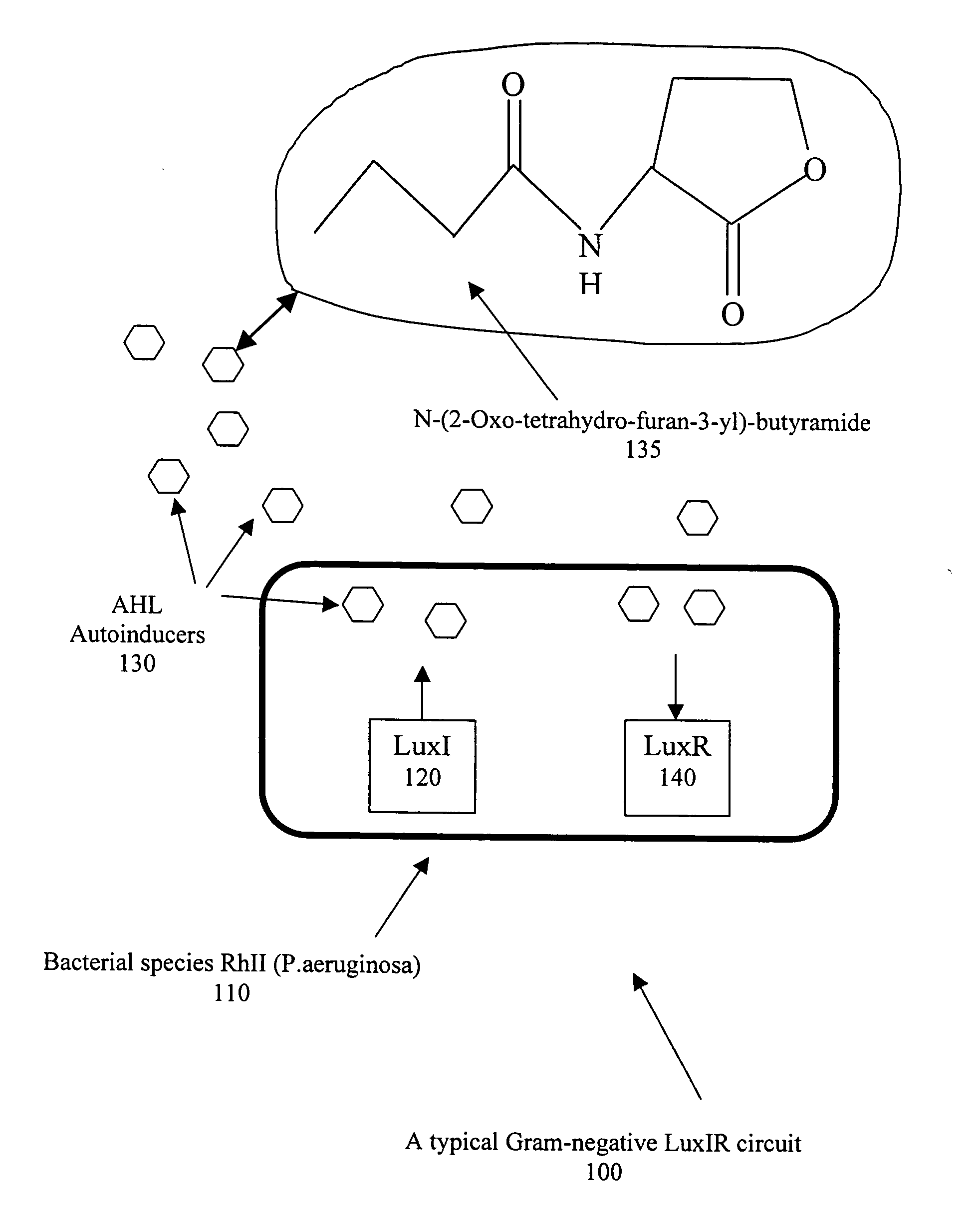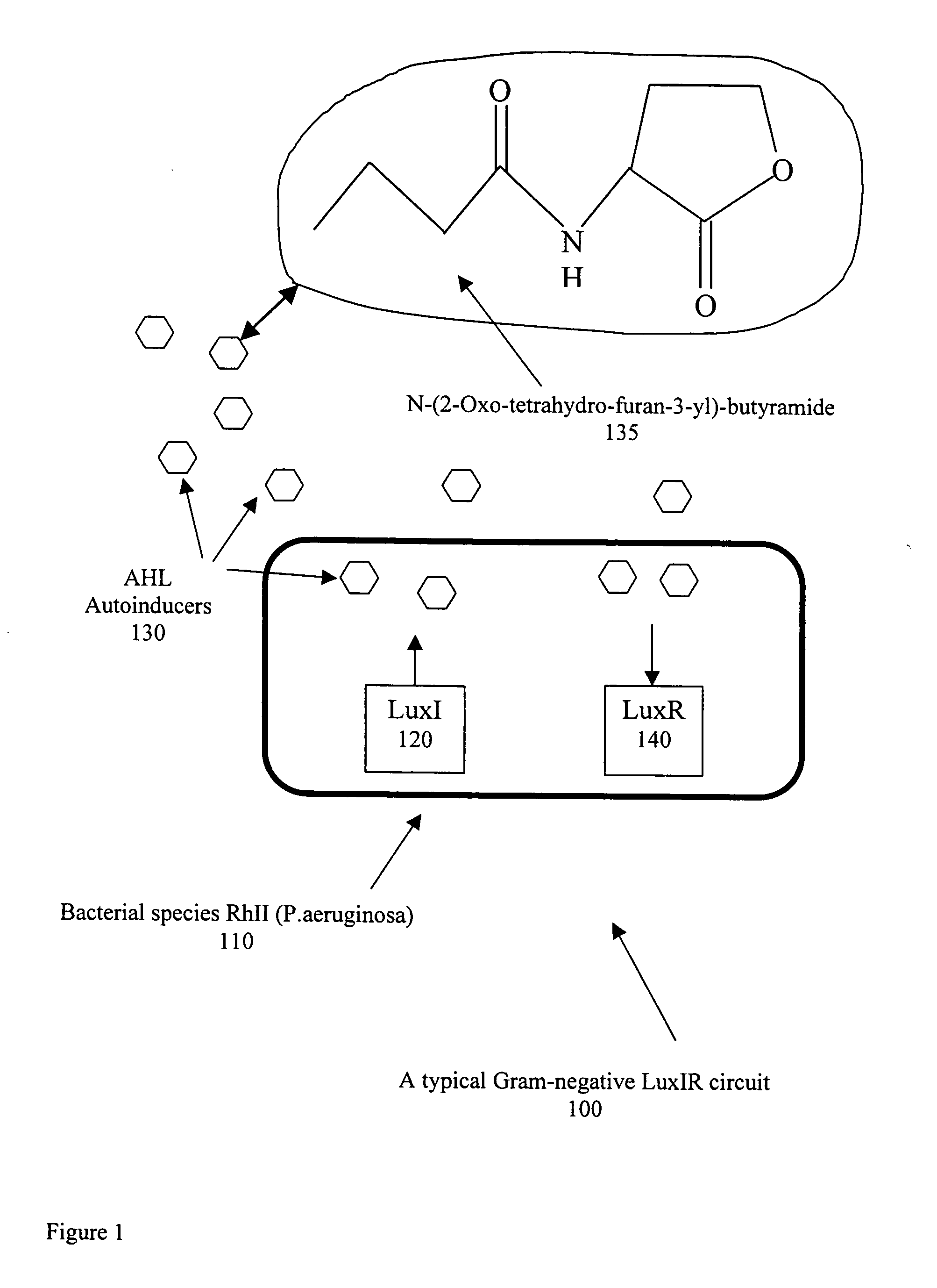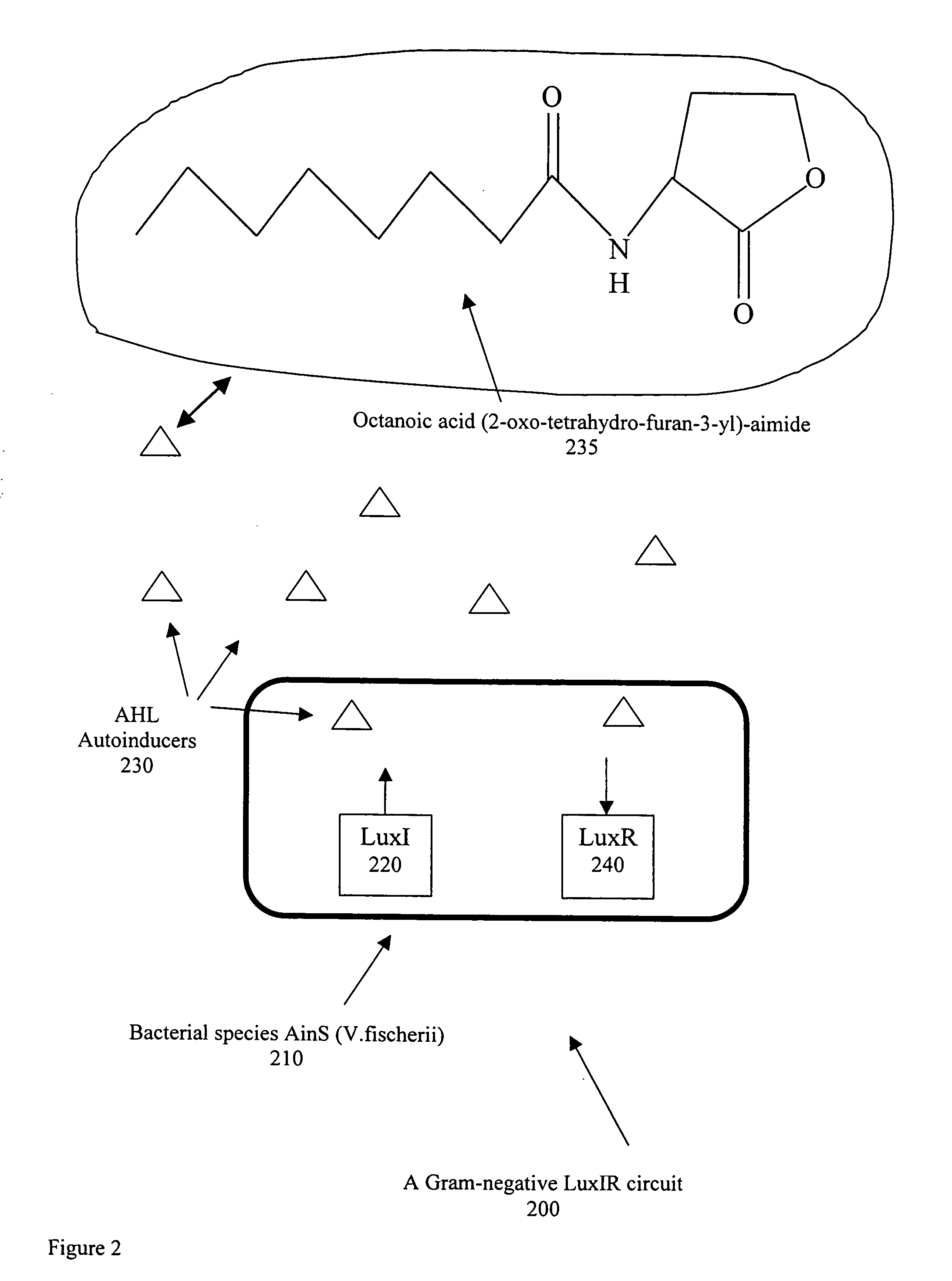Detection of signaling molecules in a biological environment
a signaling molecule and biological environment technology, applied in the direction of material testing goods, biochemistry apparatus and processes, instruments, etc., can solve the problems of known methods are not real-time bacteria detection schemes, and require a more complicated and expensive procedure, so as to promote the premature ripening of foodstuffs and minimize the effect of the
- Summary
- Abstract
- Description
- Claims
- Application Information
AI Technical Summary
Benefits of technology
Problems solved by technology
Method used
Image
Examples
Embodiment Construction
[0024]Bacteria are for the most part free-living and, when provided with habitable environments, they can reproduce by the process of binary fission such that one bacterial cell can produce up to 10 million descendants within 18 to 2 hours. The physical shape of bacteria may be rod shaped (bacilli), spherical (cocci), or spiral (spirochaetes). Also, bacilli can be either straight or bent, and cocci can be arranged in pairs (diplococci), in clusters (staphylocobcci) or in long chains (streptococci). The design of a selective detection system dependent on the physical shape of specific bacteria would be an enormous challenge. However, within the framework of quorum sensing, it has been reported by S. A. Voloshin & A. S. Kaprelyants, “REVIEW: Cell-Cell Interactions in Bacterial Populations,” Biochemistry (Moscow), Vol 69, No. 11, 2004, pp. 1268-1275, that it is possible to use certain detection proteins which can selectively distinguish between the chemical characteristics of the signa...
PUM
 Login to View More
Login to View More Abstract
Description
Claims
Application Information
 Login to View More
Login to View More - R&D
- Intellectual Property
- Life Sciences
- Materials
- Tech Scout
- Unparalleled Data Quality
- Higher Quality Content
- 60% Fewer Hallucinations
Browse by: Latest US Patents, China's latest patents, Technical Efficacy Thesaurus, Application Domain, Technology Topic, Popular Technical Reports.
© 2025 PatSnap. All rights reserved.Legal|Privacy policy|Modern Slavery Act Transparency Statement|Sitemap|About US| Contact US: help@patsnap.com



